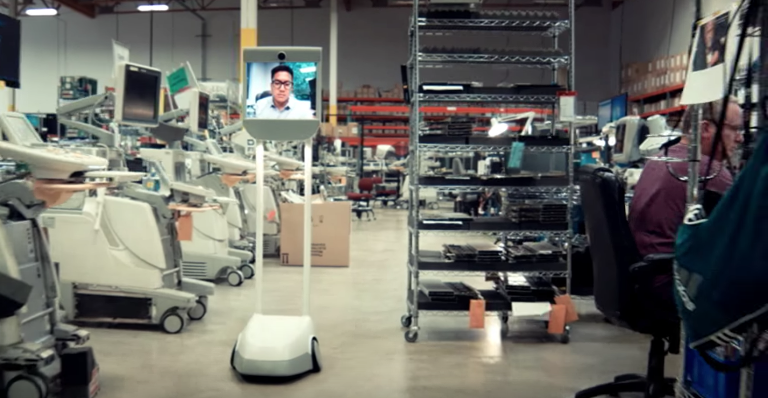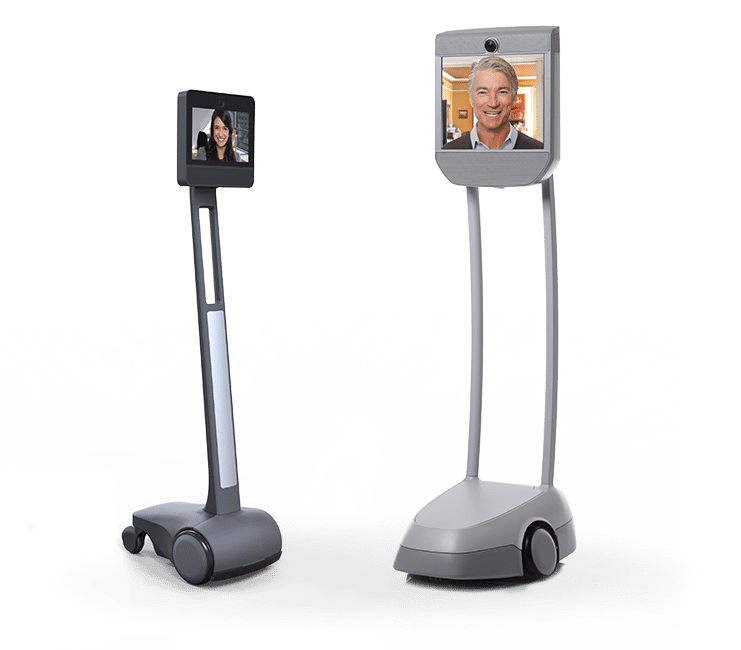It’s a fact: the telepresence robot today represents a real alternative to business travel. But how much? What is the carbon footprint of the device? How much CO2, or carbon dioxide, is emitted when connecting to a Beam® or BeamPro® telepresence robot? Hugues Trochu, an industrial engineer working for Awabot, answers this tricky question.
“Evaluating the carbon impact of the telepresence robot amounts to calculating the quantity of CO2 emitted during the use of the tool, in the most precise context of use possible, with the comparison as a scale of magnitude.
Thus, imagine that I have to participate in a professional interaction (conference, meeting, site visit, etc.) lasting two hours in Paris, while I live in Lyon.
To get there, I have the choice between:
- take a petrol or electric car, the train or even the plane…
- or quite simply, teleport me by connecting to a telepresence robot on site, and thus avoid moving around and wasting time in transport.”
Carbon impact of Beam® and BeamPro® telepresence robots
Step 1: calculation of the quantity of CO2 emitted per kWh in France.
“To calculate the carbon footprint of telepresence robots, I will first rely on the French energy mix dating from 2020, which can be found on a simple EDF bill.
I will then refer to ADEME to find out the CO2 emissions per kilowatt hour of each of the energy sources, in order to weight them.
Step 2: Calculation of the amount of CO2 emitted by Beam® and BeamPro® batteries
- Beam® model: battery capacity is estimated at 0.24 kWh.
0.24kWh * 93gCO2e
The amount of CO2 emitted is equivalent to 22 grams of CO2 per kWh.
- BeamPro® model: battery capacity is estimated at 0.612 kWh.
0.612kWh * 93gCO2e
The amount of CO2 emitted is equivalent to 57 grams of CO2 per kWh.”
Step 3: calculation of the carbon footprint of the Beam® and BeamPro® telepresence robots for two meeting hours
“To obtain the estimated carbon footprint of using Beam® and BeamPro® for two hours, it suffices to base ourselves on the maximum charging time of the batteries, i.e. 8 hours.
- Beam® model:
22 g / 8 h * 2 hours of connection, i.e. an estimated CO2 emission of 6 grams. - BeamPro® model:
57 g / 8 h * 2 hours of connection, i.e. an estimated CO2 emission of 14 grams.
These results do not take into account:
- the impact of embodied energy, i.e. the energy spent for the production of each of the solutions, currently being assessed by Awabot, which will be the subject of a forthcoming publication.
- the data flow and the impact of the videoconference connection on the user side, which are difficult to estimate (According to the Ademe website, each minute of videoconference emits 1g of CO2).
Comparison with alternative modes of transport
“According to ADEME and as an indication, the quantity of CO2 emitted per person for a Lyon – Paris round trip is as follows:
- Combustion car: 179.80 kgCO2e
- Electric car: 18.44 kgCO2e
- TGV or Intercités: 2.82 kgCO2e
- Airplane: 142 kgCO2e
Thus, the Beam® and BeamPro® telepresence robots present a very clear difference with the other alternatives. Added to this advantage is the time saving represented by the absence of physical travel.”
Carbon footprint of telepresence robots: conclusion
“Awabot makes every effort to maximize the life cycle of its products, designed to last, for example by ensuring backward compatibility of the device during hardware or software upgrades, or by repairing robots with parts sometimes taken from old machines. Thus, as with any technological device, your carbon impact linked to the use of Beam® or BeamPro® will be even lower if the device is used regularly. Indeed, the more the product is used, the greater the impact of embodied energy will be minimized.”
In accordance with the recommendations of the latest report of the Intergovernmental Panel on Climate Change (IPCC) published in April 2022, it seems essential to rethink our travels in order to minimize our carbon footprint. Telepresence robots are an interesting alternative, allowing you to be present remotely in order to interact with people on site as if you were really there. Teleworking and hybrid work, site visit, management of distributed teams… The uses are endless, depending on your habits and your needs.
Contact our team to discuss now in order to integrate the telepresence robot as a tool for more responsible mobility and your CSR approach.








